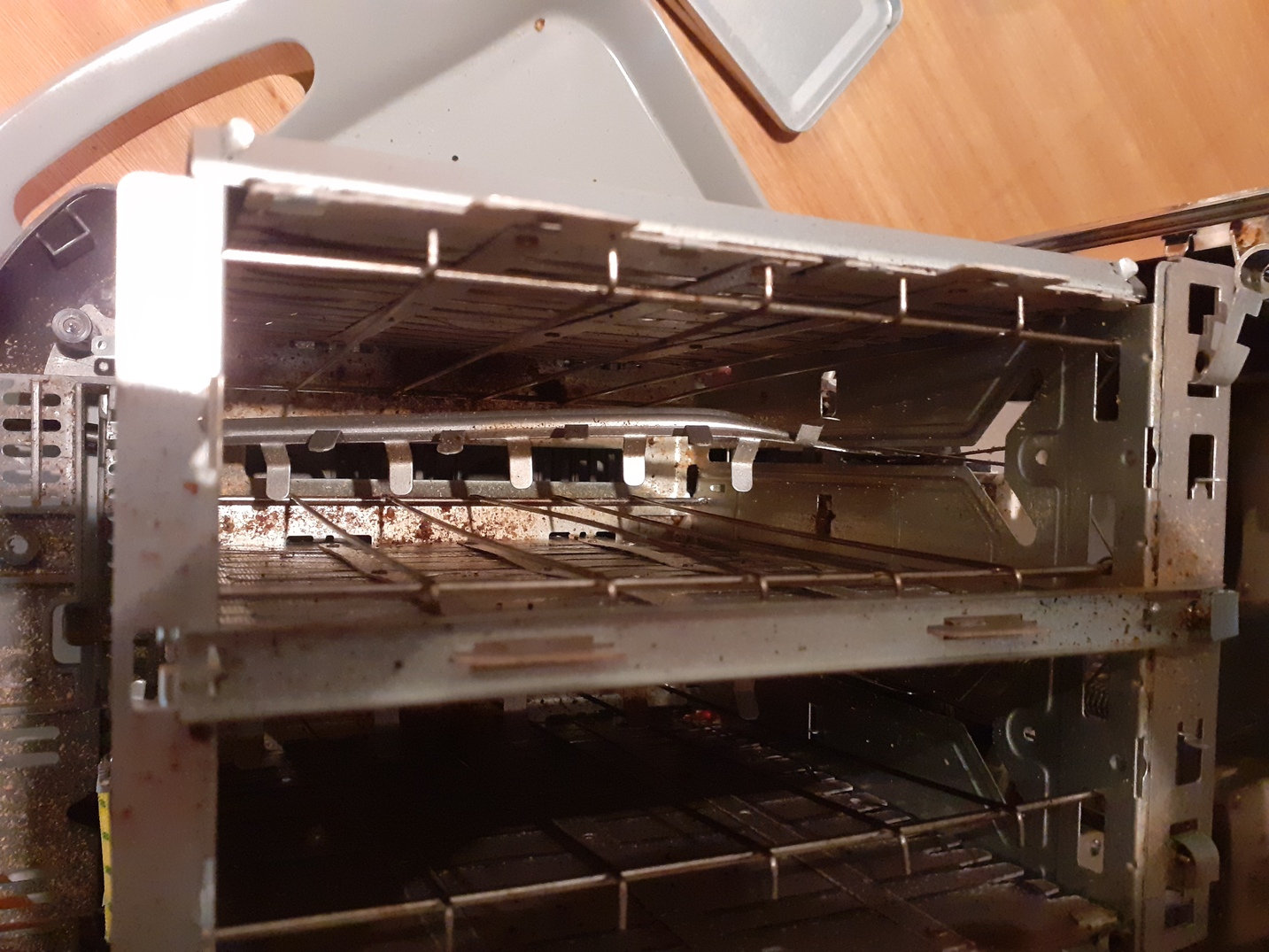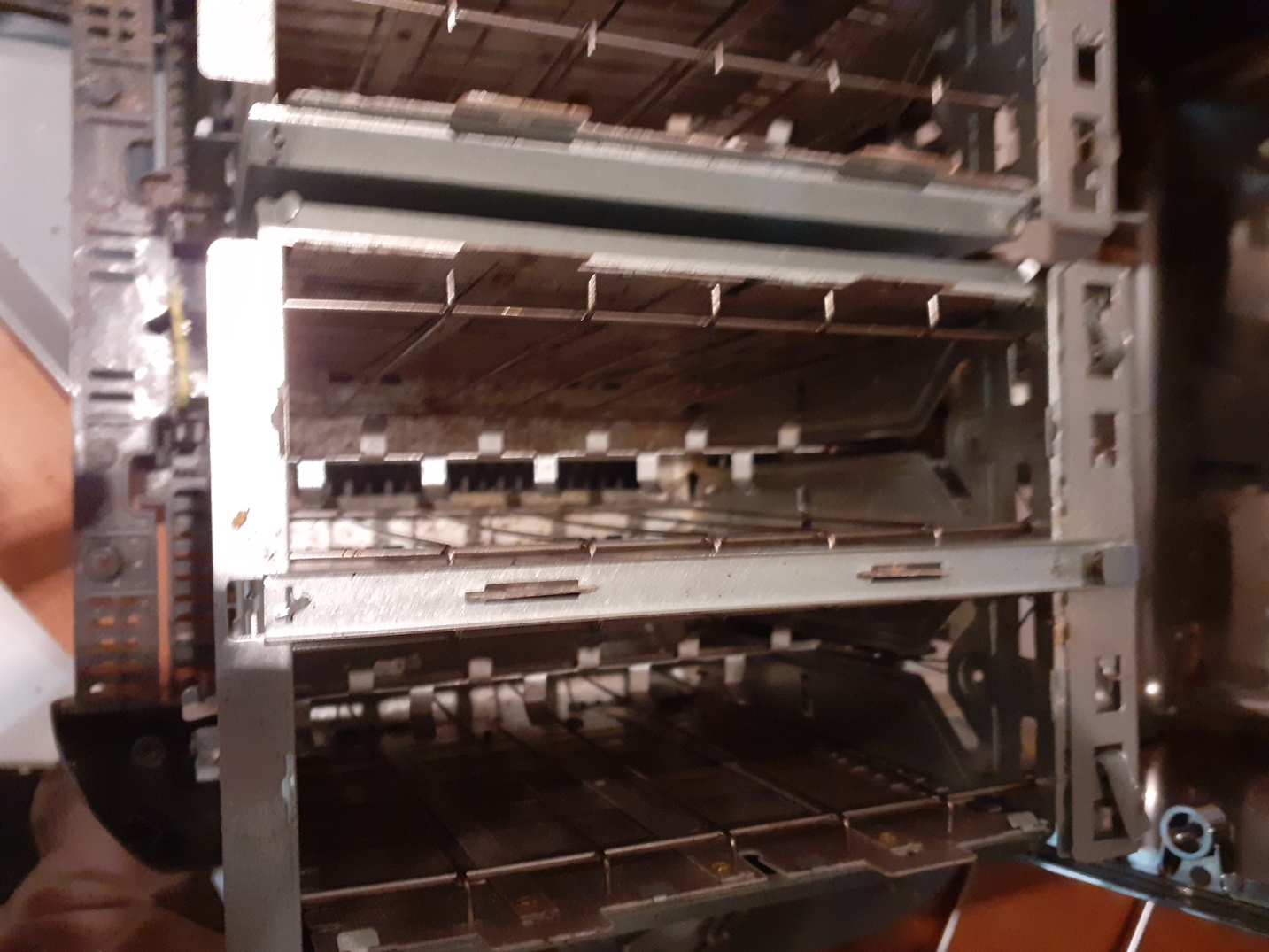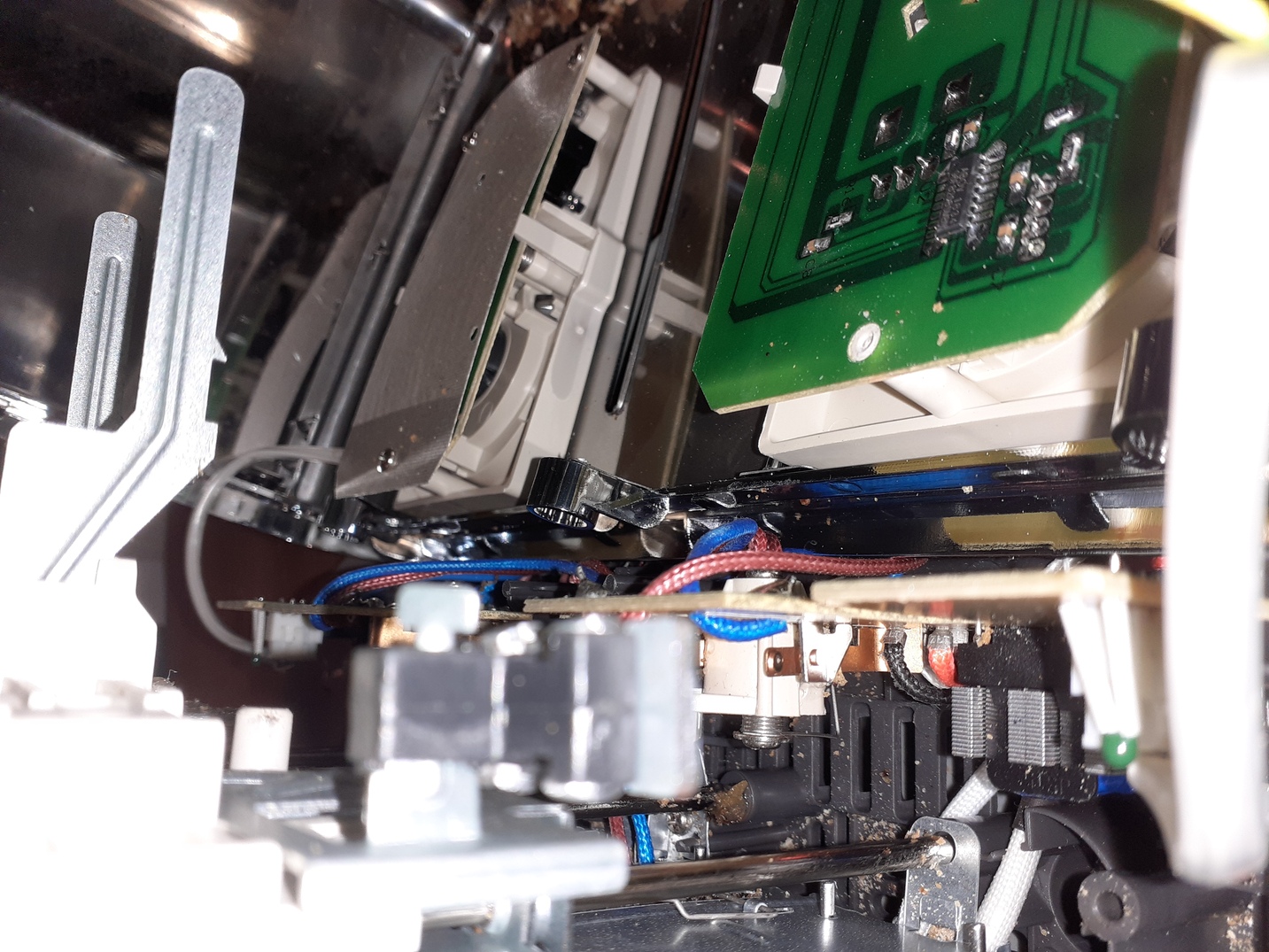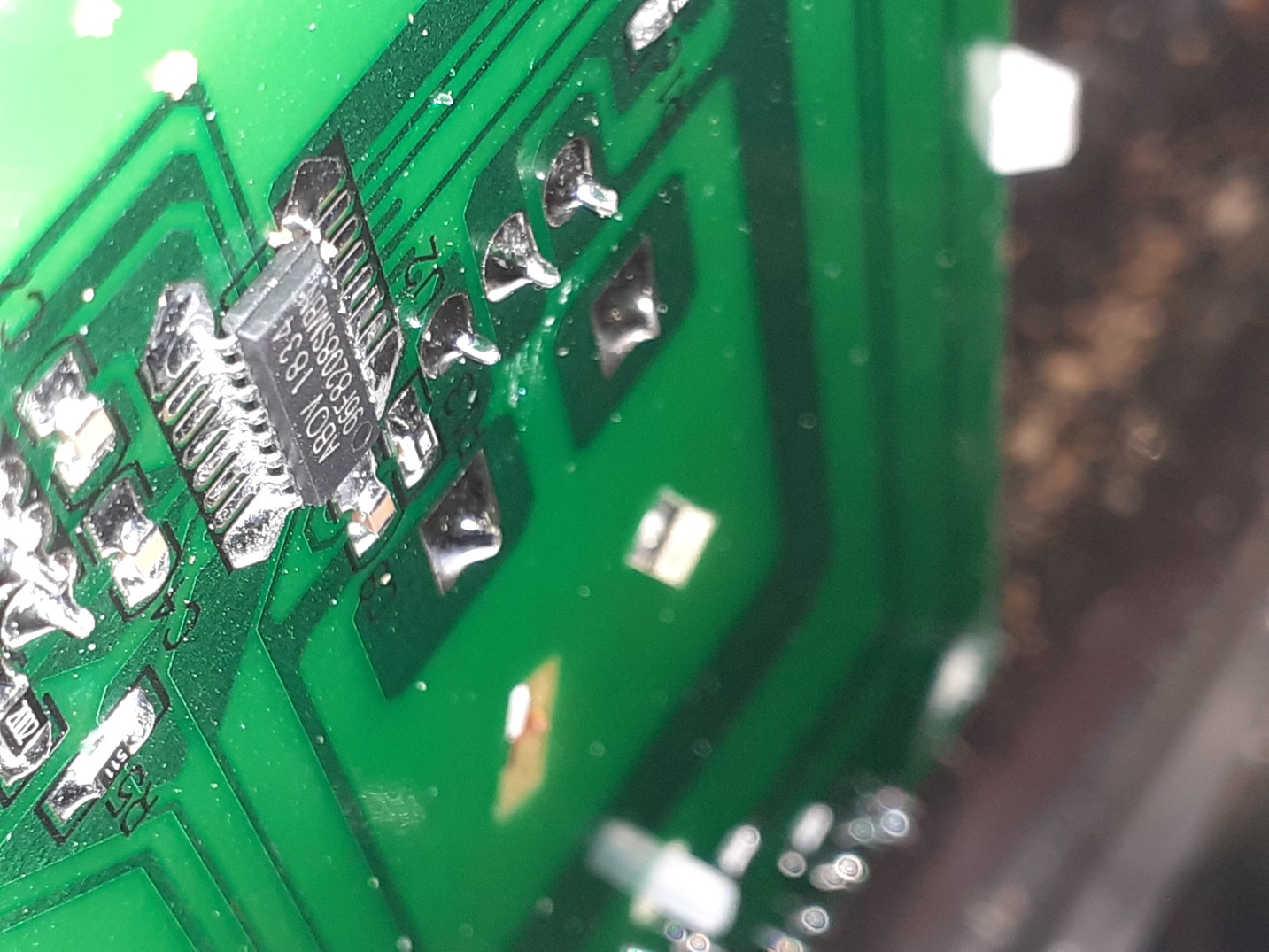Somebody has bent the toaster. It shouldn’t be looking like this:
It should be looking rather like this:
Oh well. It’s only mild steel and it bends easily. Some springs got out of place too, but it’s easy enough to ping them all back, particularly with the unbent side for comparison. The hard thing is normally taking toasters apart—cheapy ones are frequently held together with bent metal tabs, which sheer if you try to unbend them—and of course it’s always messy. But this is a quality toaster. I got it half price, but if a tree fell on it tomorrow I would go out and buy the same model. It has the deepest slots of any toaster in the local Tescos (and the local Tescos had many toasters). I know. I measured them all. (Back then nobody bothered you in shops. Now of course they’d probably arrest me for touching the merchandise and spreading the coronavirus.) And I was going to award Russel Hobbs full marks for making something with no hidden screws and only standard heads, until lo and behold! there was one hidden screw with a star head. Well I have screwdrivers a lot more exotic than star heads, but that’s one black mark against Russel Hobbs. So the toaster only scores 19/20.
Aside—Why, oh why, do they do this? Everything abounds with hidden ‘safety’ screws, weird screw heads, nonstandard threads, inverted genders—why do you think WiFi equipment doesn’t use an SMA plug? Because it was felt that the weird ‘reverse SMA’ it used would discourage users from plugging in antennas with too high a gain and polluting the spectrum—so they say. But how does this reasoning hold up? Reverse SMA connectors had to be manufactured, so of course one can buy a dozen reverse-SMA-to-SMA adaptors, and any number of aftermarket wifi antennas with ready-fitted reverse-SMA connectors. They’re no better than the antennas without—I’ve seen 24db advertised, and that will cause a lot of interference if it’s not very carefully sited in a remote area—they’re just more expensive. Did some nutcase bureaucrat decide that if we couldn’t take our toasters apart, we wouldn’t die of electrocution? And how many die of electrocution from taking their toasters apart? If it’s more than one a year, I fear we should keep it quiet—in the current climate they might just lock the country down until they can find a truly unopenable toaster…
But anyhow, it was very easy to bend everything back. But while we’ve got this open, what’s inside? I was impressed to see two distinct control boards, each of which controls three wires running to elements in the toasting grid (?! Perhaps for level control? Although it uses a triac so it could just dim them. Or are they perhaps in parallel—but in that case, why not just wire them together?). There’s what is evidently some kind of thermistor, probably for the defrost and reheat cycles, which is nice to see. Though I do notice that this toaster is fairly reliable from cold and from hot, which suggests it might be applying something cleverer than a timer. Here are all the innards from one side:
and here is the MPU:
Unfortunately, beyond that it’s an MPU, I couldn’t find anything out about this chip. It appears to be something home-grown for the Chinese market, and the only references I could find were marketing references largely in Chinese. But it’s definitely an MPU, and quite a modern one at that. So there are now two computers in a toaster. How times do change.



